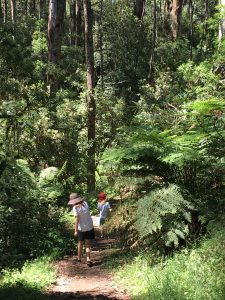Start by choosing an exercise and practicing for a few minutes a couple of times a day. Over time you can build up to longer periods. Regular check-ins with ourselves through the day are a helpful stress management tool. Even if we are only pausing long enough to take a couple of deep breaths to help break the build up of tension and mental activity throughout the day we can help to reduce stress and tension.
Wherever possible, move to a nice, quiet place to practise the exercise without interruption.
Position
A position where you are unlikely to go to sleep is best for meditation. Sit in an upright position, with the back and neck straight, if possible. Try to sit in a balanced and relaxed position, with minimal strain or undue muscle tension. Let your eyes gently close.
Progressive muscle relaxation
Be aware of the body and let it fall still. Still and calm. Become aware of the different parts of the body. Release muscle tension patiently, consciously and methodically. Start with the feet. Notice whether there is any muscle tension being held there … let it go. And now the legs. Be conscious of the legs, and if there is any tension there, let it pass and so on to the stomach and back, the hands and arms, the shoulders, neck and face. If you become aware of any tension creeping back into the body, simply practice letting it go again. You do not have to make yourself relax, rather, just allow yourself to relax, give yourself permission to relax. Trying to force things goes against the grain of relaxation and can you make you feel frustrated and unable to succeed in the exercise. Relaxation and meditation exercises take practice. Each day you can practice this. Each day you can benefit… and slowly over time you will notice it feel a little easier.
Breathing
Start by exhaling. Feel the tension release, your shoulders drop, as you exhale. Then breathe in and feel the breath as it passes in and then out of the body. Let your attention rest with the air as it passes in and then out. Notice the simple process. Give yourself permission to simply notice your breathing. There is no right or wrong. Just breathe. And if distracting thoughts steal you away, or if feelings come into the mind or body, carrying the attention away with them, be aware of them, notice them and let them move on by, release them. There is no need to try to stop these thoughts coming into the mind, nor to try to force them out. Forcing them just feeds them… gets us to fuse with them… and can even make them more powerful. Simply notice the them and then redirect your attention back to your breathing. Inhaling and exhaling… observing, detaching and letting go.
Listening
And we can practice this same kind of attentiveness by consciously listening to the sounds around us. Notice the sounds. Let them come and go and let any thoughts about the sounds come and go. Notice the sounds that are close and also those that are in the distance. Let go of the distracting thoughts which prevent you from resting and coming to the here and now. After you have practiced for your time you set aside, slowly go backwards through the steps, from the sounds, back to your breath, then awareness of your body. And then slowly open your eyes if they were closed. After a few moments move into the activities which need your attention.









More Stories